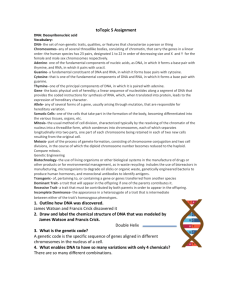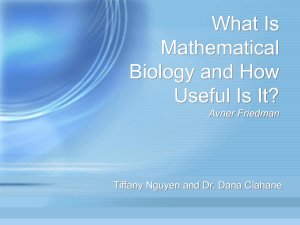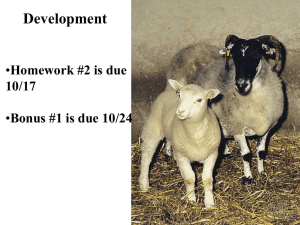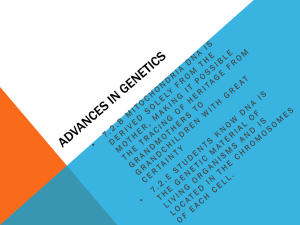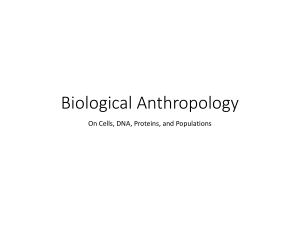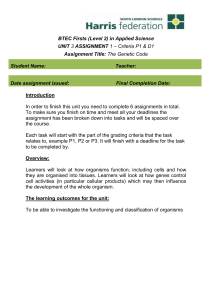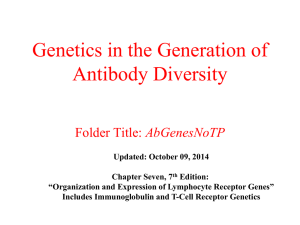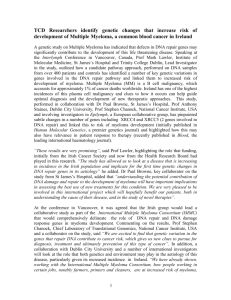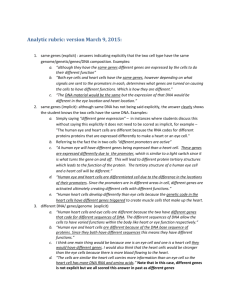Plyusnina
advertisement
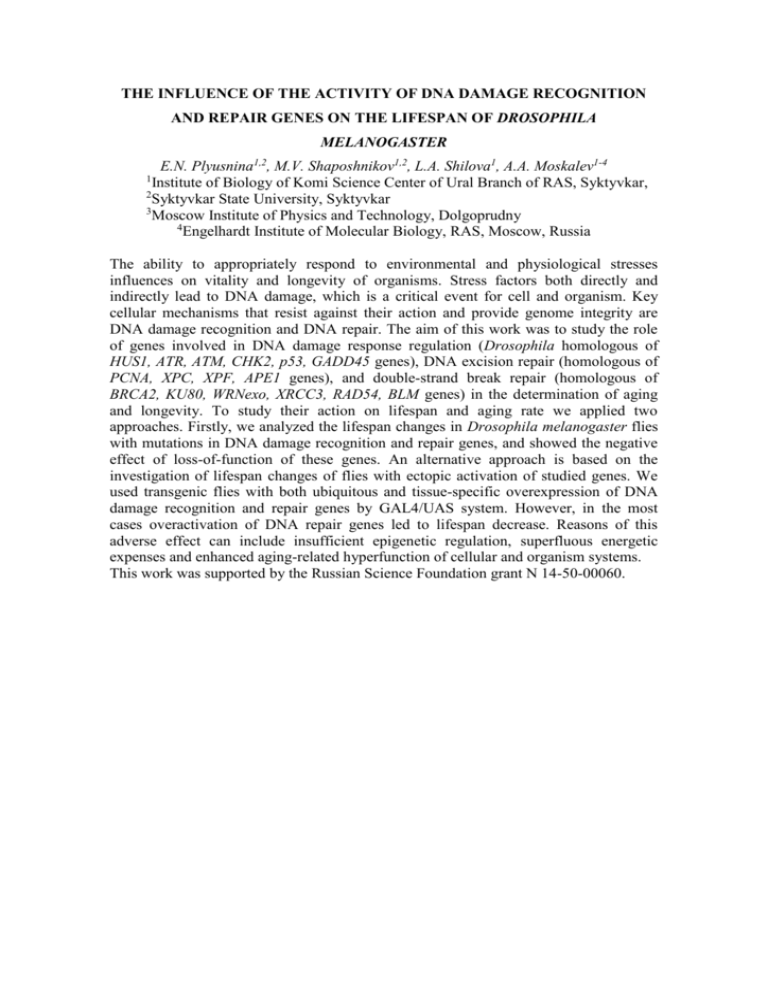
THE INFLUENCE OF THE ACTIVITY OF DNA DAMAGE RECOGNITION AND REPAIR GENES ON THE LIFESPAN OF DROSOPHILA MELANOGASTER E.N. Plyusnina1,2, M.V. Shaposhnikov1,2, L.A. Shilova1, A.A. Moskalev1-4 Institute of Biology of Komi Science Center of Ural Branch of RAS, Syktyvkar, 2 Syktyvkar State University, Syktyvkar 3 Moscow Institute of Physics and Technology, Dolgoprudny 4 Engelhardt Institute of Molecular Biology, RAS, Moscow, Russia 1 The ability to appropriately respond to environmental and physiological stresses influences on vitality and longevity of organisms. Stress factors both directly and indirectly lead to DNA damage, which is a critical event for cell and organism. Key cellular mechanisms that resist against their action and provide genome integrity are DNA damage recognition and DNA repair. The aim of this work was to study the role of genes involved in DNA damage response regulation (Drosophila homologous of HUS1, ATR, ATM, CHK2, p53, GADD45 genes), DNA excision repair (homologous of PCNA, XPC, XPF, APE1 genes), and double-strand break repair (homologous of BRCA2, KU80, WRNexo, XRCC3, RAD54, BLM genes) in the determination of aging and longevity. To study their action on lifespan and aging rate we applied two approaches. Firstly, we analyzed the lifespan changes in Drosophila melanogaster flies with mutations in DNA damage recognition and repair genes, and showed the negative effect of loss-of-function of these genes. An alternative approach is based on the investigation of lifespan changes of flies with ectopic activation of studied genes. We used transgenic flies with both ubiquitous and tissue-specific overexpression of DNA damage recognition and repair genes by GAL4/UAS system. However, in the most cases overactivation of DNA repair genes led to lifespan decrease. Reasons of this adverse effect can include insufficient epigenetic regulation, superfluous energetic expenses and enhanced aging-related hyperfunction of cellular and organism systems. This work was supported by the Russian Science Foundation grant N 14-50-00060.
